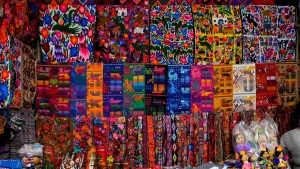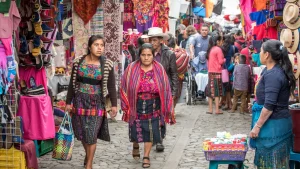Chinchines are traditional Guatemalan percussion instruments, also known as rattles or maracas. Their distinctive sound has accompanied rituals, dances and celebrations for centuries, making them a symbol of the country’s intense cultural heritage.
Chinchines are believed to have pre-Hispanic roots, used by the ancient Mayans in religious ceremonies and rituals. Their design and materials have evolved over time, but their essence as a percussion instrument has remained.
Chinchines are mainly made from the fruit of the morro tree, a hard and resistant pumpkin. The manufacturing process is artisanal and careful. The first step is the fruit selection, ripe, good-size stalks must be chosen; then the pulp is removed and the fruit is left to dry in the sun for serveral days; when dry, the seeds, pebbles or small objects are introduce inside to produce the characteristic sound when shaken; and the final step is the decoration, they are painted and decorated with traditinoal Mayan designs, using natural dyes and acestral techniques.
Chinchines are used in various cultural events in Guatemala like religious ceremonies, folk dances, community celebrations, and traditional music. The dates when you are most likely to hear chinchines is December, since they are used in the posadas, small processions carring Sain Mary and Saint Joseph, they are taking from house to house asking for shelter.
The colors used in the decoration of chinchines have a symbolic meaning. Black represents the connection with the ancestors and the underworld. Red symbolizes vital energy, blood and strength. Yellow represents the sun, light and fertility, and Green symbolizes nature, life and hope. The geometric designs and animal figures painted on the chinchines also have a symbolic meaning, related to the Mayan worldview and the connection with nature.
Chinchines are a cultural treasure of Guatemala, passed down from generation to generation. Their sound evokes the history, traditions and spirituality of the Guatemalan people. You can find them in different markets, souvenir shops or directly from artisans who make them.







